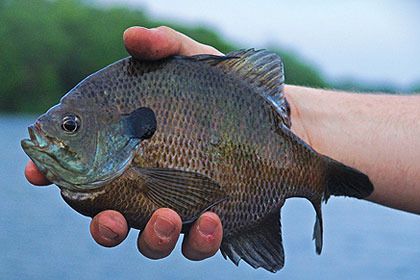I'm no fisheries biologist, but it seems to me that the bluegill we have in Florida are different from the bluegill in the northern states. I have fished in Michigan, Ohio and other northern areas and have caught bluegill that have a slightly different appearance than those in Florida.
In Florida, the bluegill are dark and have a copper-colored area on their heads. I have never seen this in northern bluegill.
Are Florida bluegill a sub-species?
Any thoughts?
Michigan bluegill:
Florida bluegill:






 Reply With Quote
Reply With Quote
